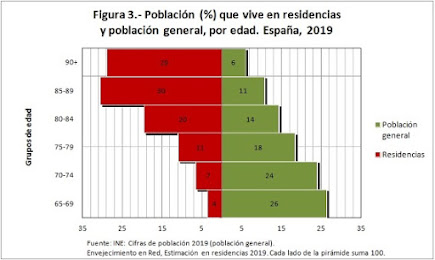HOW HAS THE CARE FOR THE ELDER INDUSTRY EVOLVED IN SPAIN?
In 2010 , Pricewater House Coopers wrote a report about the Long Term Care industry and care for the elderly in Spain. Eventhough some years have gone by, it is interesting to read the report and think about how have things changed.
These are the conclusion of the report:
The Law on Promotion of Personal Autonomy and Care for Dependent People, known as Ley de dependencia (Law 39/2006, of December 14) commits the government to assisting all those individuals in a situation of dependency, most of whom are elderly. The review of data regarding the elderly population and the design of the theoretical cost model carried out in the preceding sections are not intended to be exhaustive but are useful for contemplating important issues regarding the situation of the care home sector in Spain.
1. The remaining authorisations of long-term care service providers need to be completed. This is essential to guarantee Spanish people an equitable right to care services of comparable quality in all geographical regions and areas. The public provision of beds still varies in terms of planning strategies, procurement systems and pre-requisites for authorisation, which makes equality between the regions difficult. Public-private partnerships are required, based on an authorisation system which sets common standards, to ensure the quality of service and equal access wherever the recipient lives. An adequate authorisation system will entail the restructuring of the sector.
2. In most regions, the economic structure of current authority agreements produces a deficit for operators. The industry requires a system of rates to be developed based on the degree and level of dependency and which are aligned with the actual cost of the service and the required quality. This would prevent private fees having to cover the deficits in the public authority rates.
3. The future sustainability of the long-term care provision sector is at risk from the current staffing and operating costs and the average authority rates. Payment by authorities of rates which are more closely aligned with the actual cost of services would not only dispel doubts about the sustainability of the sector but it would help attract the investment required to develop high-quality provision.
4. The long-term care system is a generator of non-relocatable employment. It is a new sector with great potential for the creation of stable jobs. In this regard, the provision of professional services tailored to the level of dependency of the individual should be prioritised over the granting of financial assistance which does not create employment or produce economic returns.
5. The necessary conditions can be provided to develop long-term care systems comparable to those countries which are international leaders for quality and professionalism in care of their elderly. It is important to draw attention to the work of the regional governments which, in compliance with the law, not only clearly commit to professional services, but also make significant efforts to prioritise high-quality services and adequate rates according to grade and level of dependency which meet the actual cost of services. In the future, the organisation of healthcare services needs to be developed and strengthened to bring together the home-based services as part of primary healthcare. In terms of residential centres, an efficient and flexible way forward would be to recognise a healthcare component for long-term care which objectively and equitably compensate for the shortfall of the current rate. The healthcare system would benefit from this expenditure by being able to establish a more efficient circuit for referral on discharge from hospital.
The Law on Promotion of Personal Autonomy and Care for Dependent People is an excellent first step. However, further work is needed to improve the quality of life of people in a situation of dependency and ensure the future sustainability of the sector. On the basis of the results of the study presented, we conclude that there are major development opportunities in the care home sector for the coming years on the basis of strong public-private partnerships.


Comments
Post a Comment